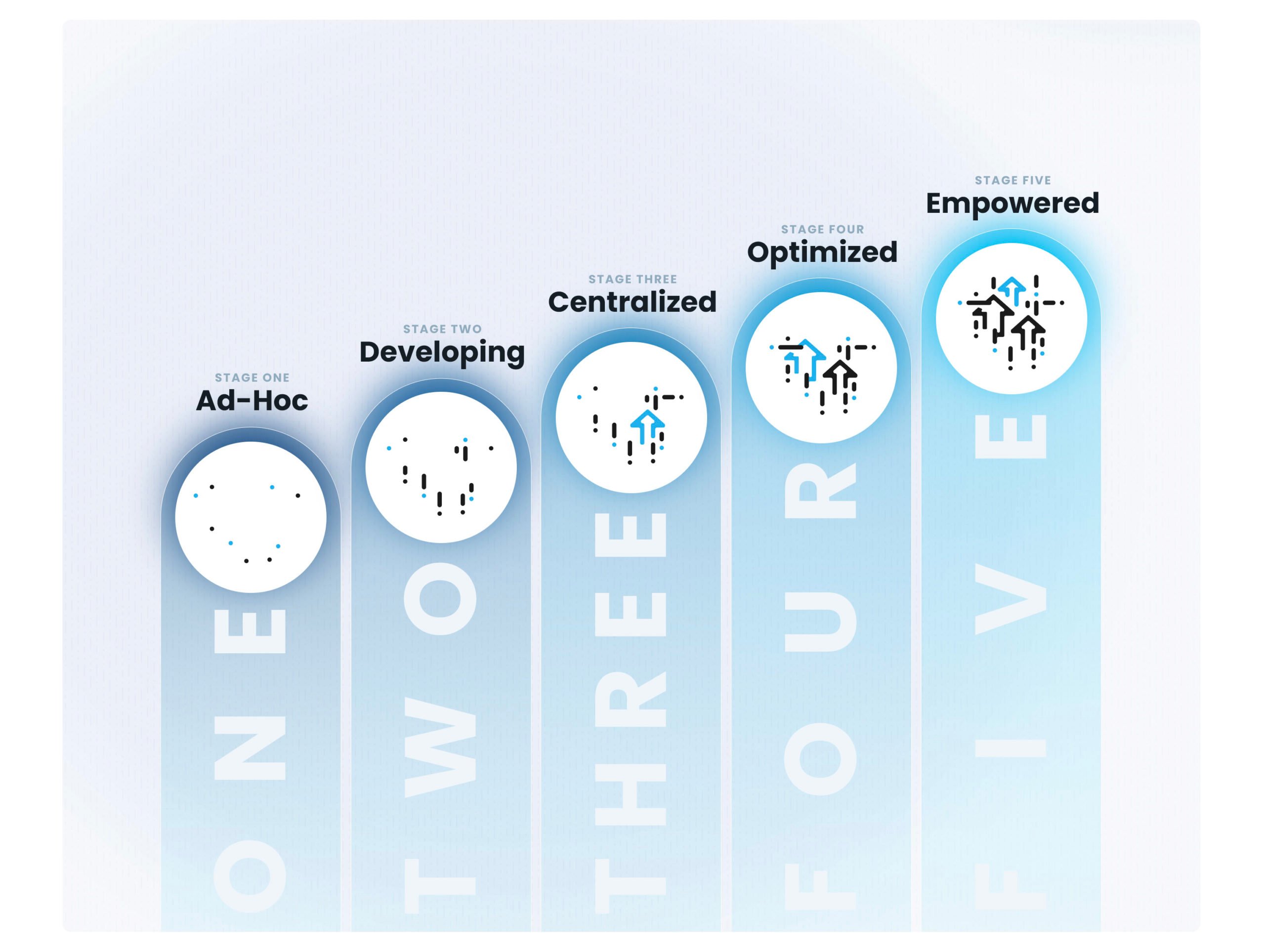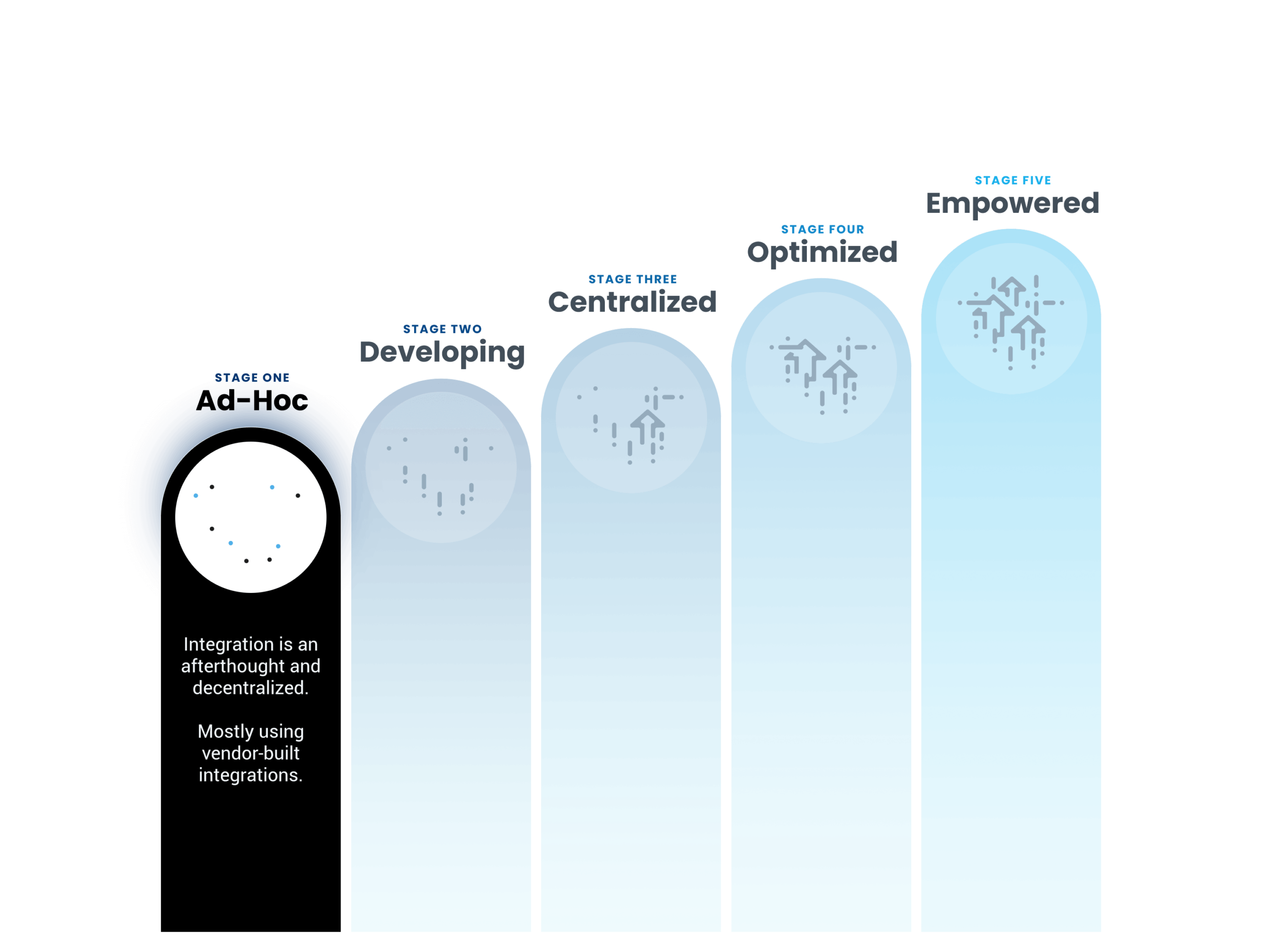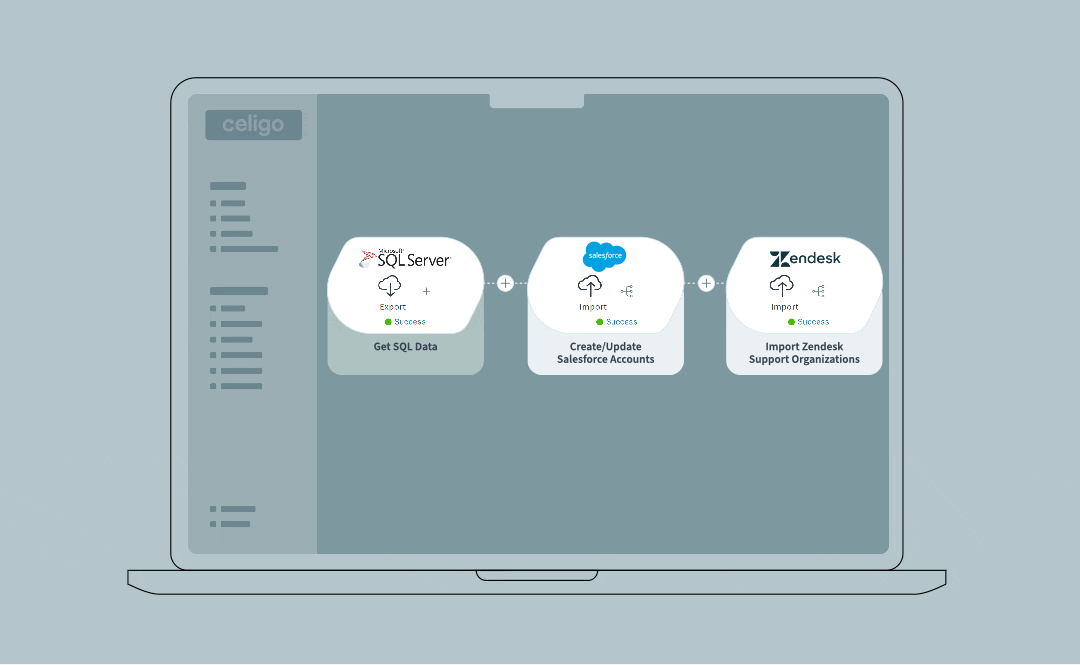Published Dec 12, 2023
How well is your company navigating your integration maturity journey?
Determine your company’s integration maturity and how to advance

As your organization expands and transforms, your automation strategy should adapt accordingly to meet changing needs and complexities. Celigo’s Integration Maturity Model is a roadmap for determining your business’ integration and operational readiness, taking these factors into consideration:
- The pain being felt
- What’s at stake
- Where a company finds itself in its lifecycle
Ready to prepare your company for the next automation stage? Let’s dive in and see where you currently stand on this model.
Key takeaways: Determining your integration maturity
- At the ad-hoc stage, businesses tackle integration issues on an as-needed basis.
- The developing stage is characterized by the use of a mix of native integrations, point-to-point integrations, and APIs.
- By the centralized stage, IT and operations own enterprise-wide integrations.
- The optimized stage involves adopting an iPaaS, enabling both technical and business users to build and manage integrations.
- By the empowered stage, businesses have an integration-first mindset and a blueprint for automation and integration in place.
Benefits and challenges of SaaS apps
In a recent survey, 65% of IT decision-makers indicated they preferred cloud-based services when considering new technology investments or upgrades. These solutions’ flexibility, efficiency, productivity, and rapid innovation are key attractions.
Integrating SaaS applications breaks down silos that slow down key business processes. But as companies ramp up their use of SaaS apps, IT teams and individual departments are left with figuring out how to manage their tech stack more effectively.
Fortunately, common trends have emerged based on a company’s developmental stage. With experience helping thousands of customers with their integrations, Celigo has distilled a decade’s worth of data into the Integration Maturity Model.
The five stages of the Integration Maturity Model

Stage 1: Ad-hoc
Manual processes prevail in this early stage. Issues are tackled on an as-needed basis by individuals with a technical background. There’s a heavier reliance on vendor-built integrations for integrating a few SaaS apps.

Stage 2: Developing
As you move forward, you might find yourself wrestling with a mix of native integrations, point-to-point integrations, and APIs. Integrating an increasing number of apps can become quite a challenge, especially when special use cases call for higher customization.

Stage 3: Centralized
Over time, IT and operations get into the driver’s seat, owning enterprise-wide integrations while working with different teams on their specific use cases. Companies at this stage have well-defined processes, can proactively identify issues, and might even adopt an integration platform (iPaaS).

Stage 4: Optimized
More and more companies at this stage are adopting an iPaaS to automate their processes and drive their business forward. Instead of IT being the sole owners of integrations, both technical and business users can build and maintain the integrations that best suit their needs.

Stage 5: Empowered
Finally, companies reaching this stage have a solid blueprint for automation and integration in place. Everyone in the company adopts an integration-first mindset, proactively working to improve business processes.
The journey never ends
If your company is still on the left side of the Integration Maturity Model, it’s worth considering the benefits of moving toward the right. Having the right tools and digital infrastructure in place will help your business accomplish its goals.
The Celigo platform, for example, empowers both IT and business users to build, manage, and maintain their own integrations. With prebuilt integrations, AI features, and robust developer tools, the Celigo platform enables you to automate business processes efficiently. By cutting down on manual processes and maintaining real-time data, your teams can focus more on strategic initiatives.
That’s why automation is such a game-changer for companies ready to scale. Want to know how your organization can shift toward the right on the Integration Maturity Model? Contact us to speak with our team of integration experts.
Integration Insights
Expand your knowledge on all things integration and automation. Discover expert guidance, tips, and best practices with these resources.



